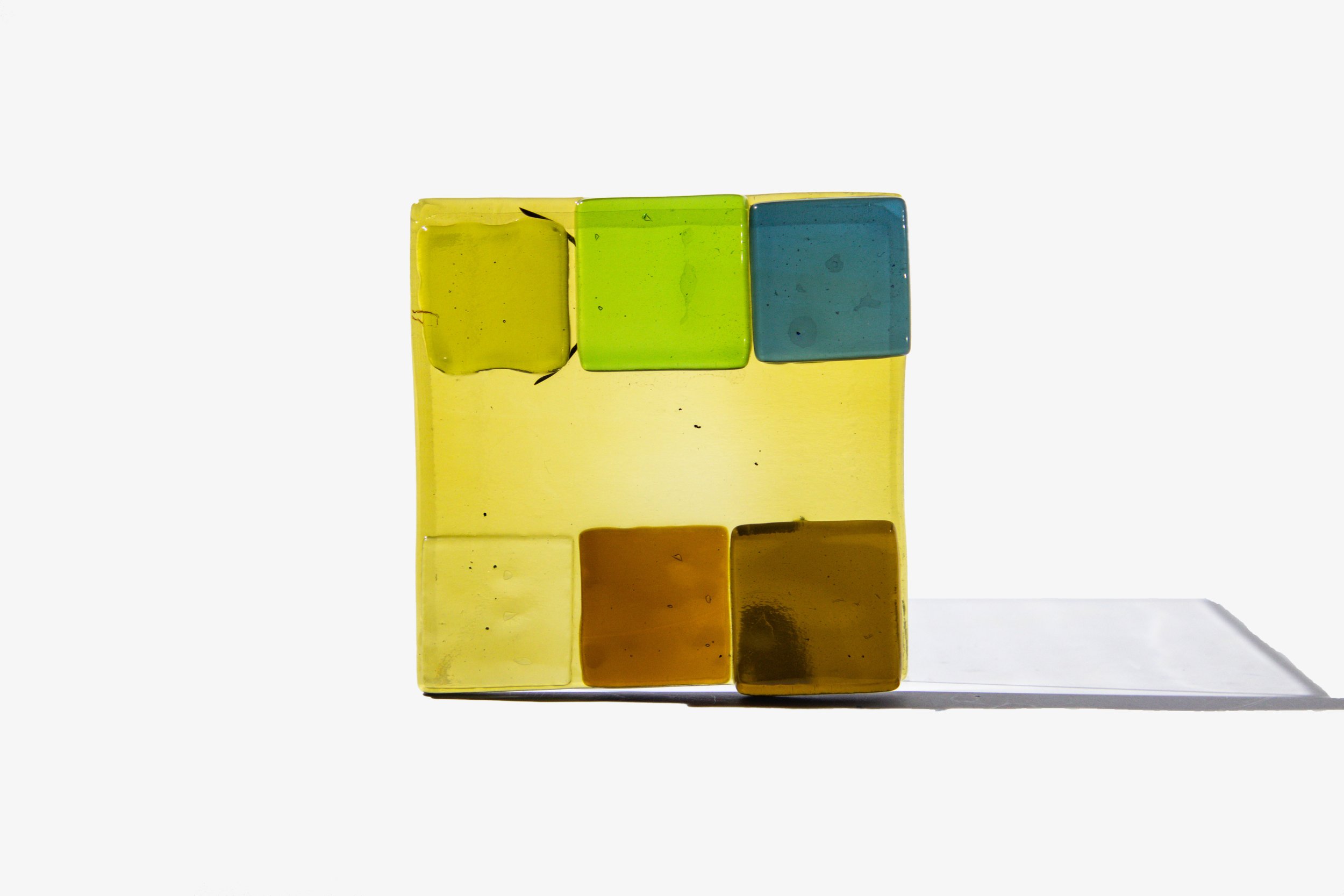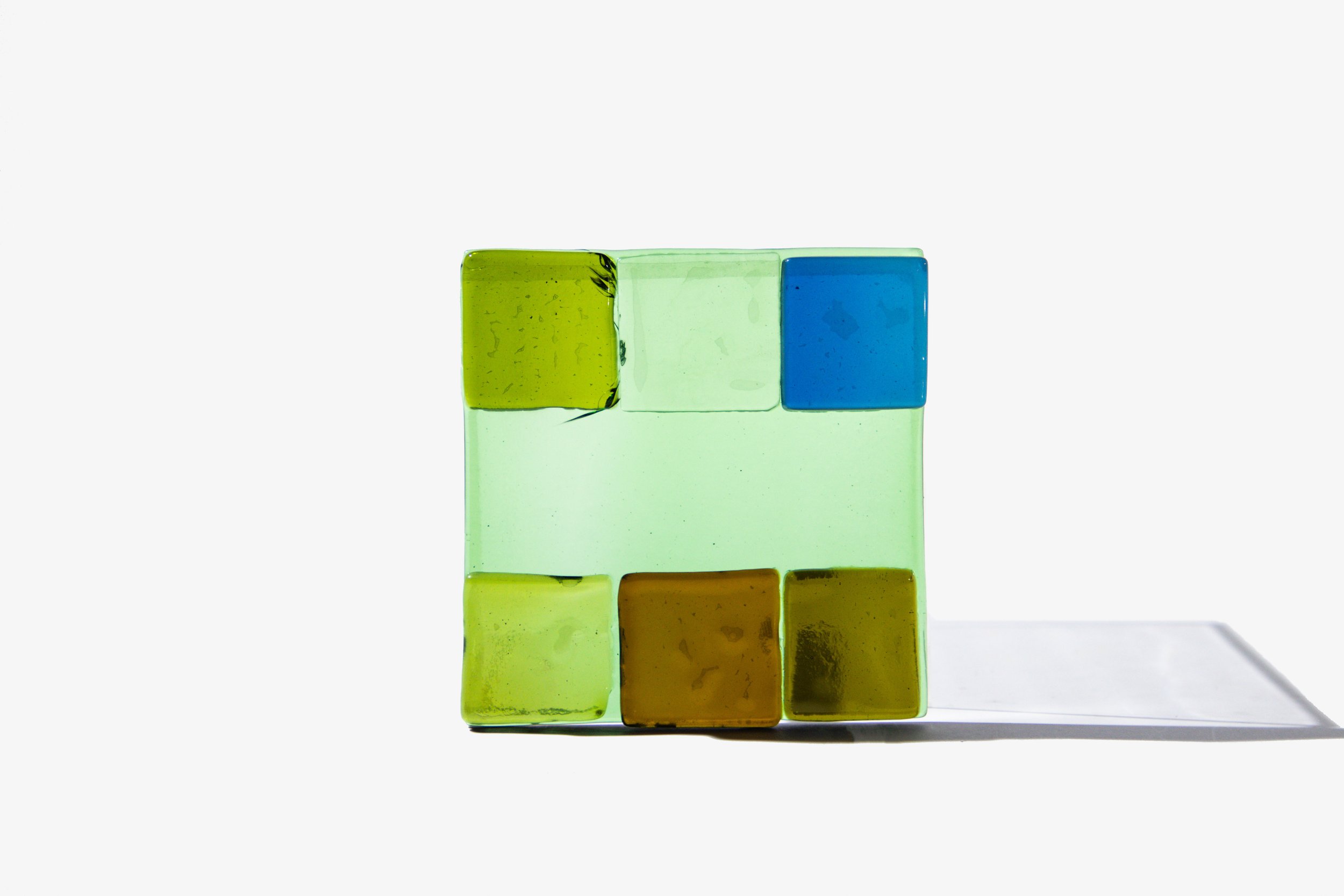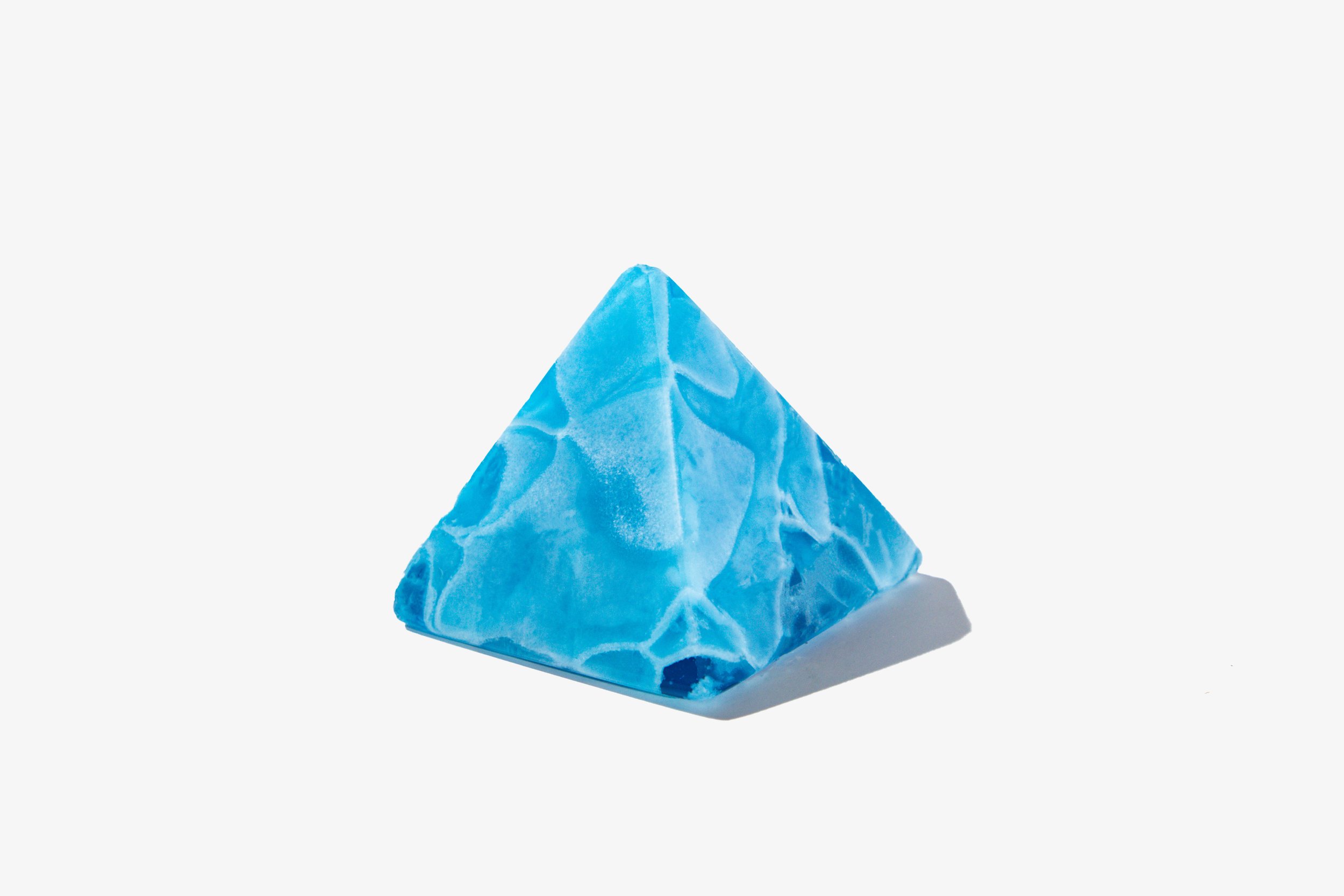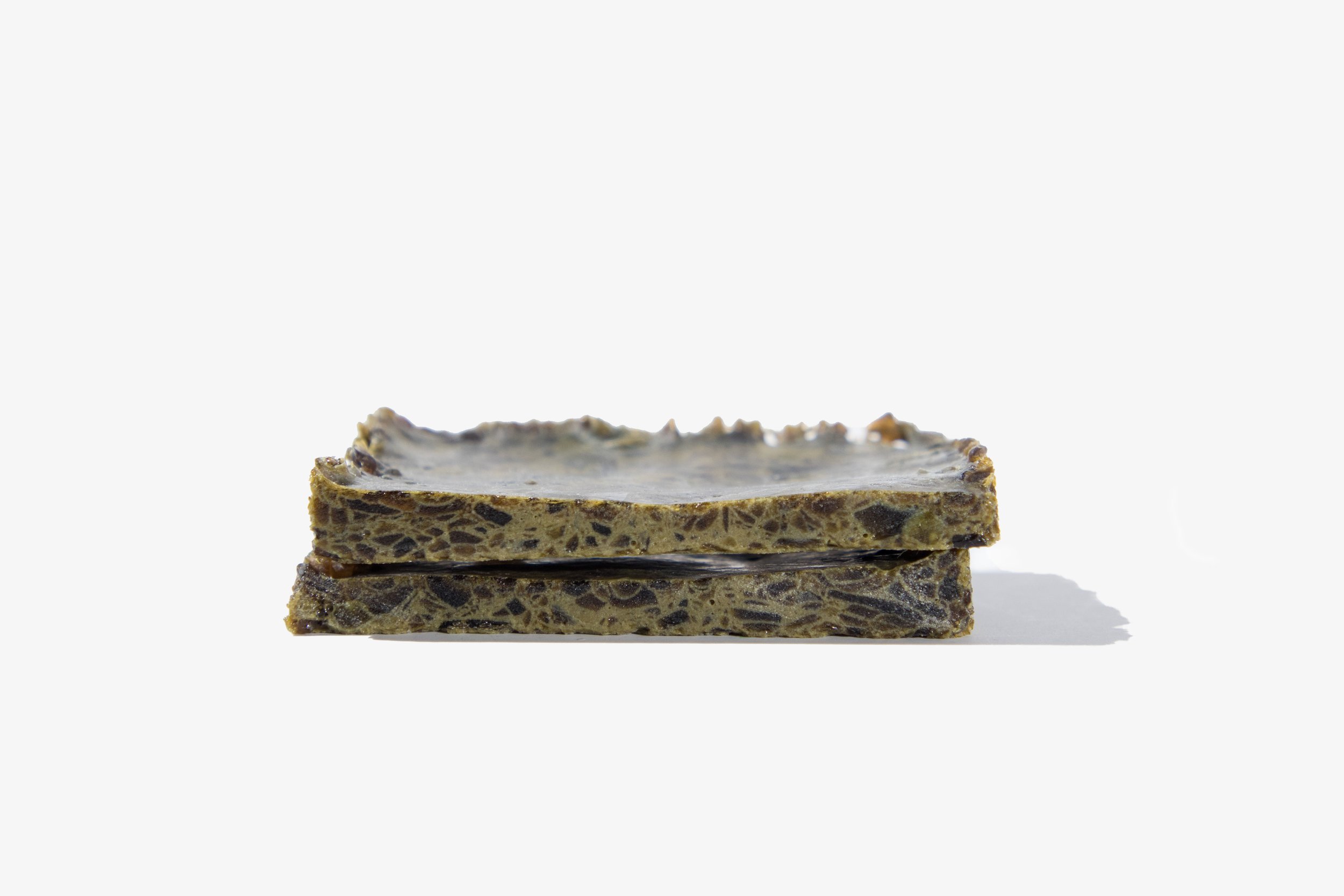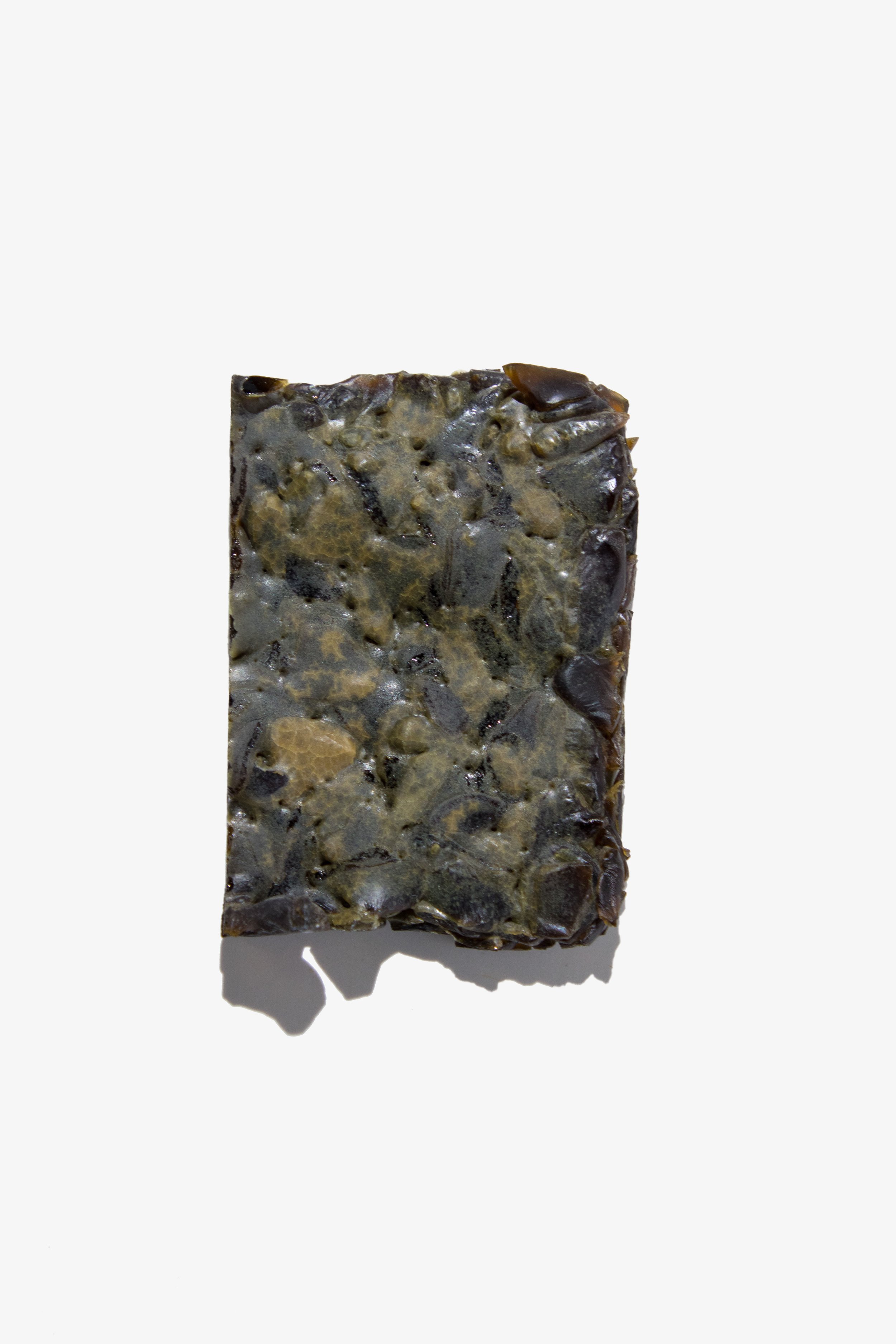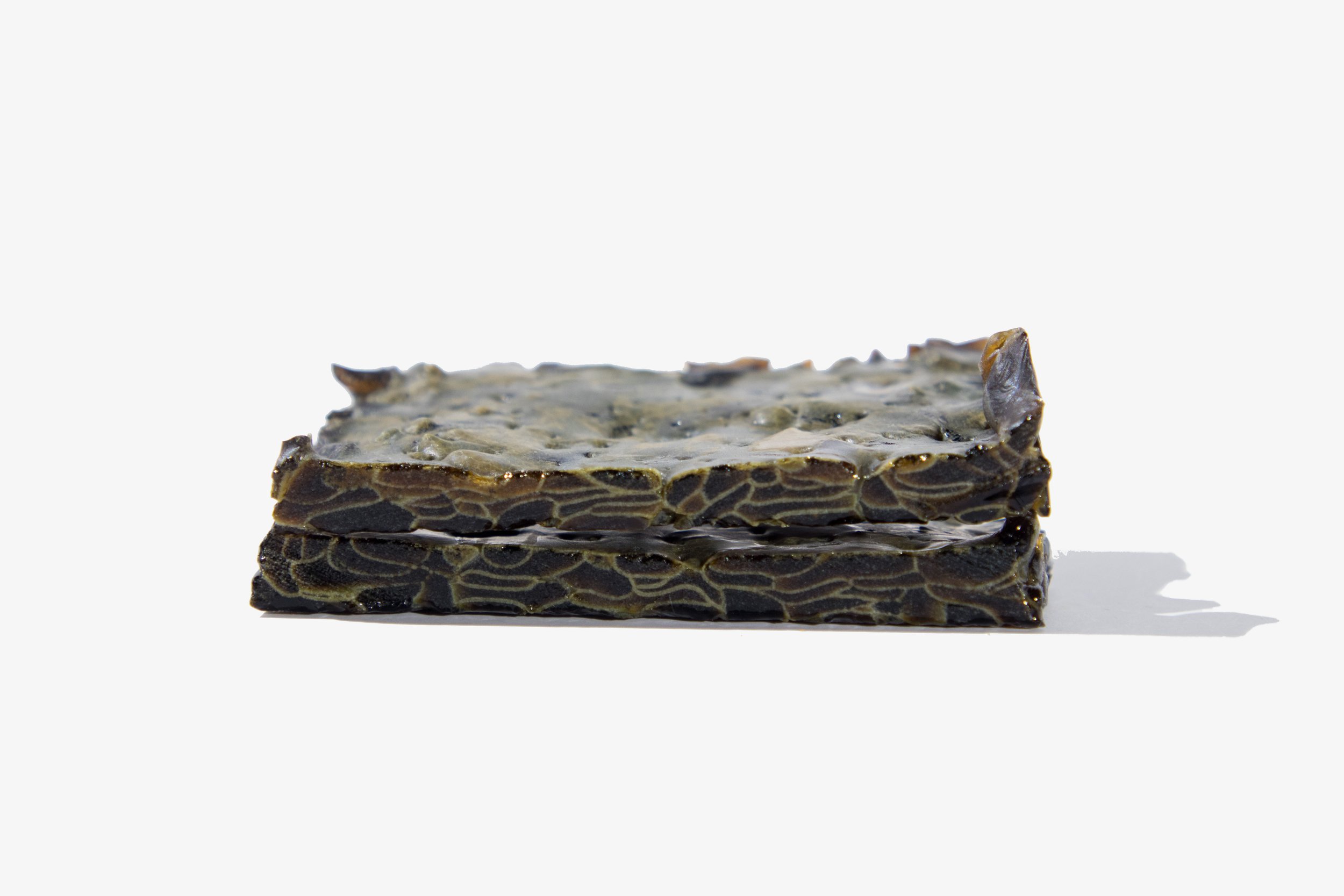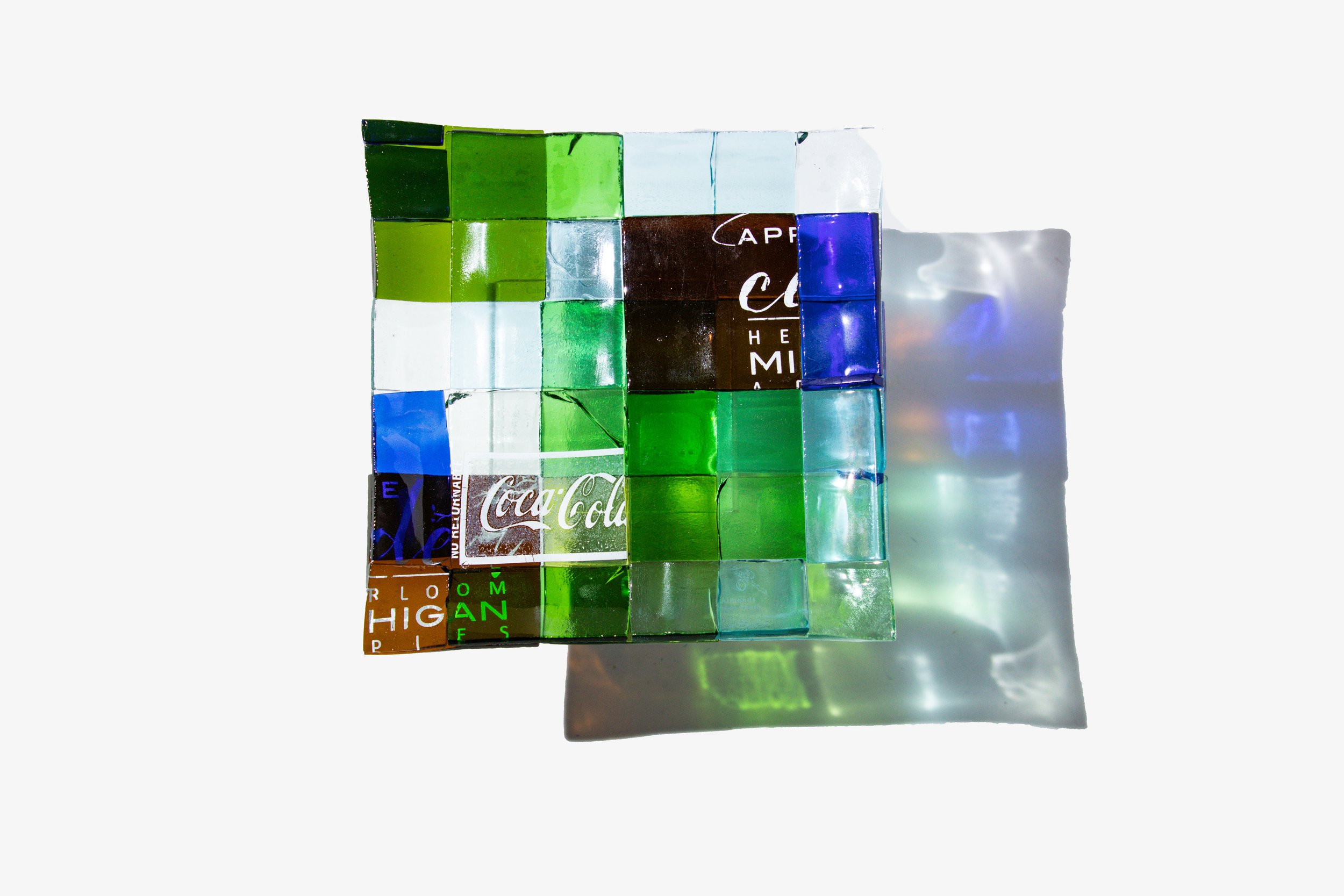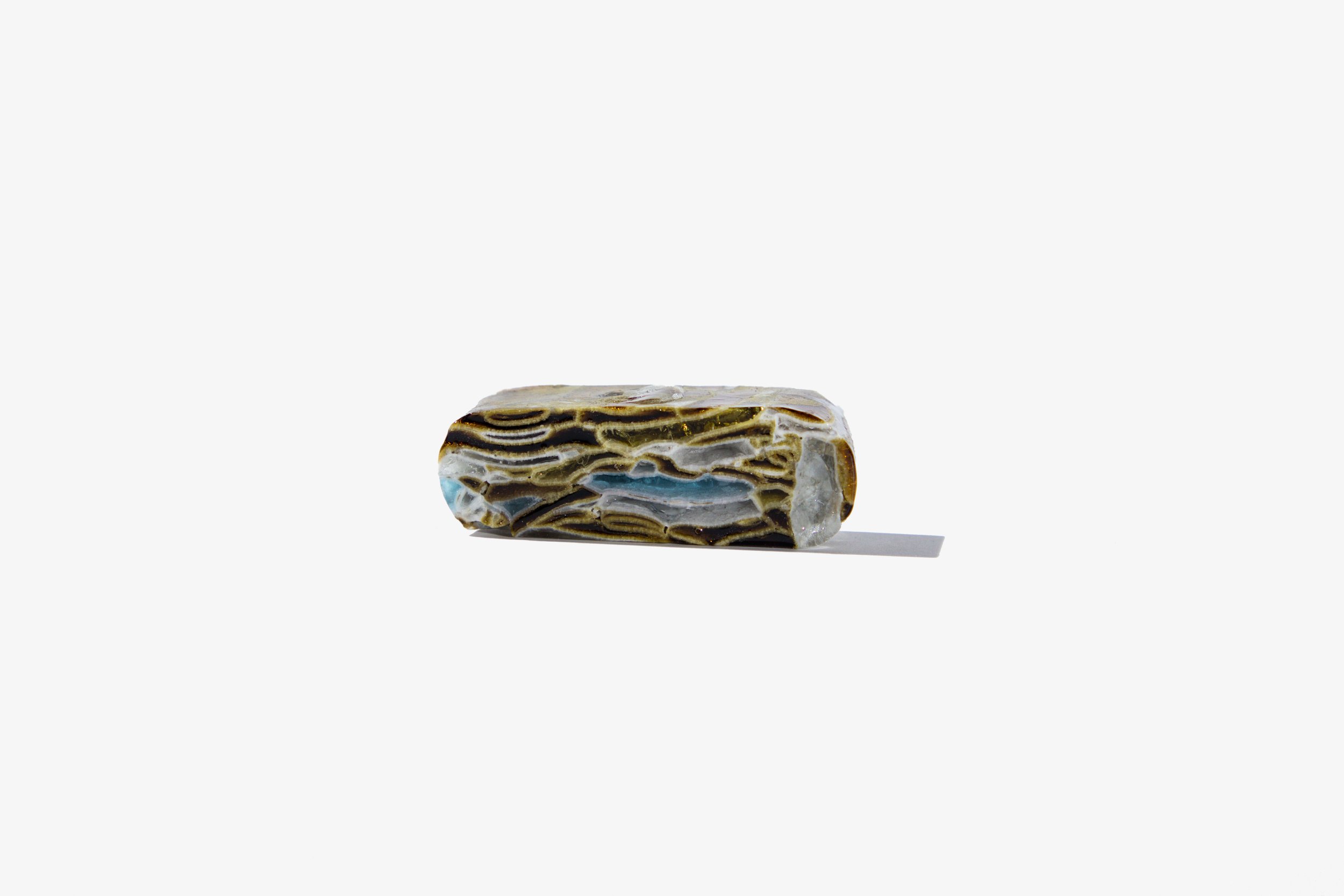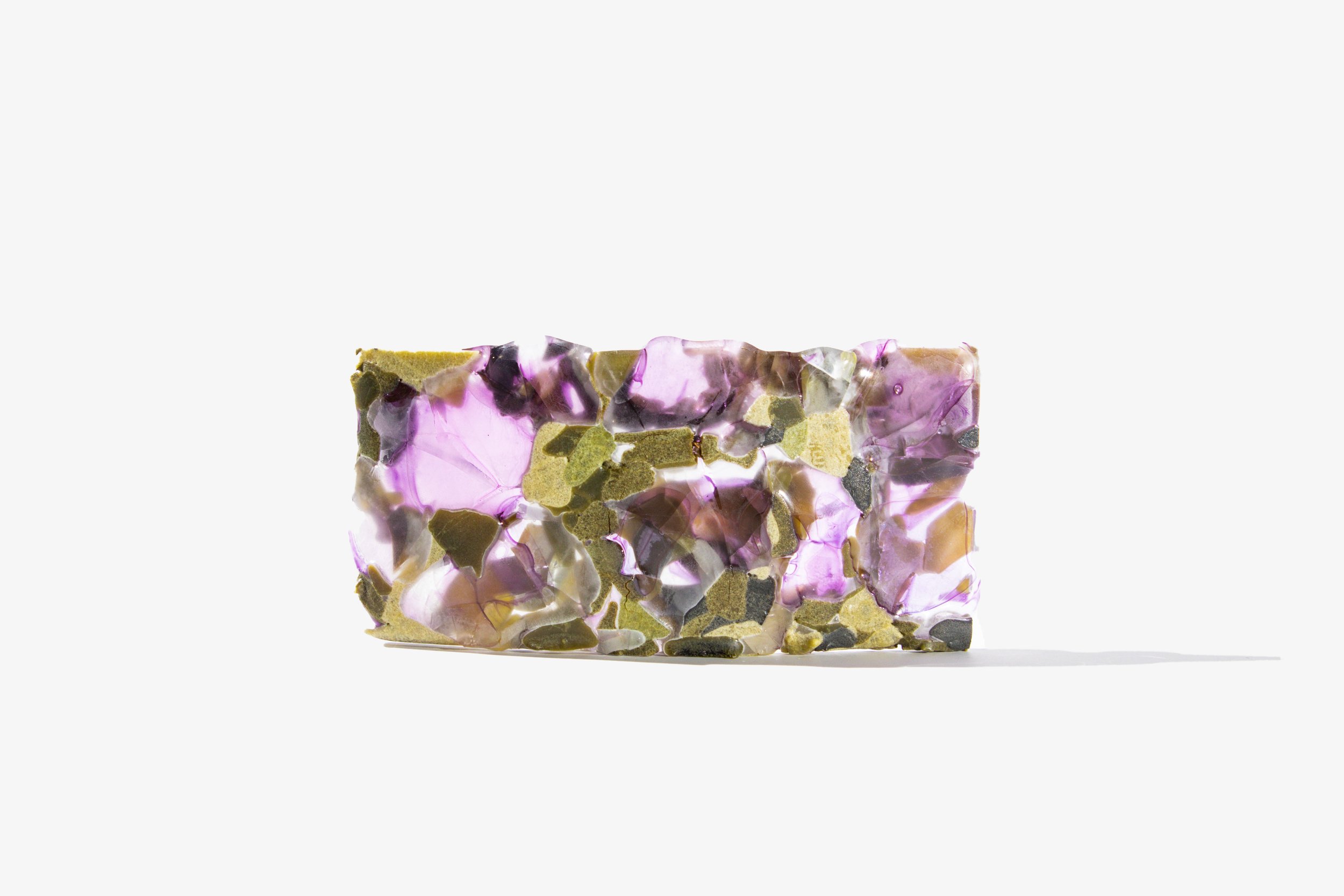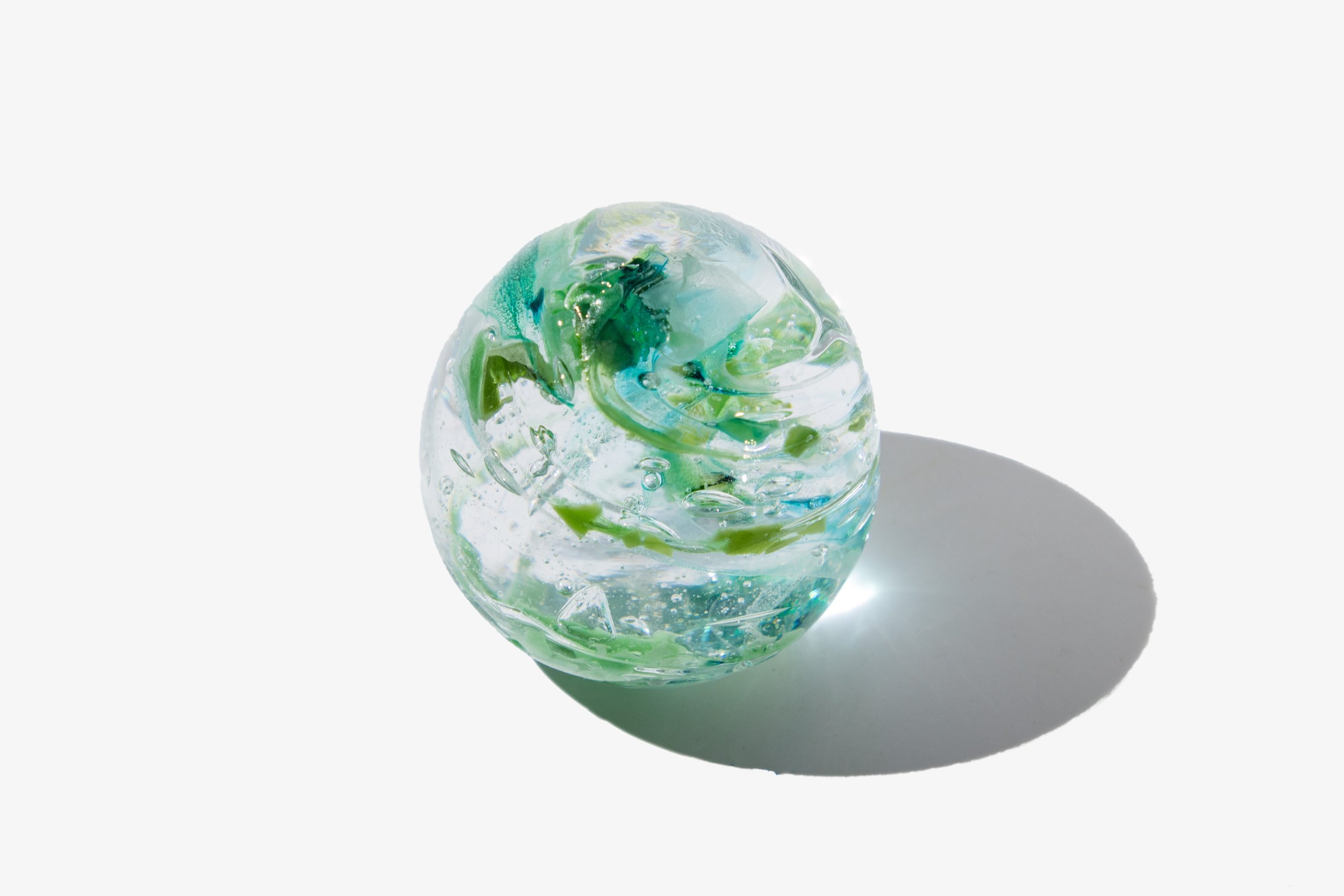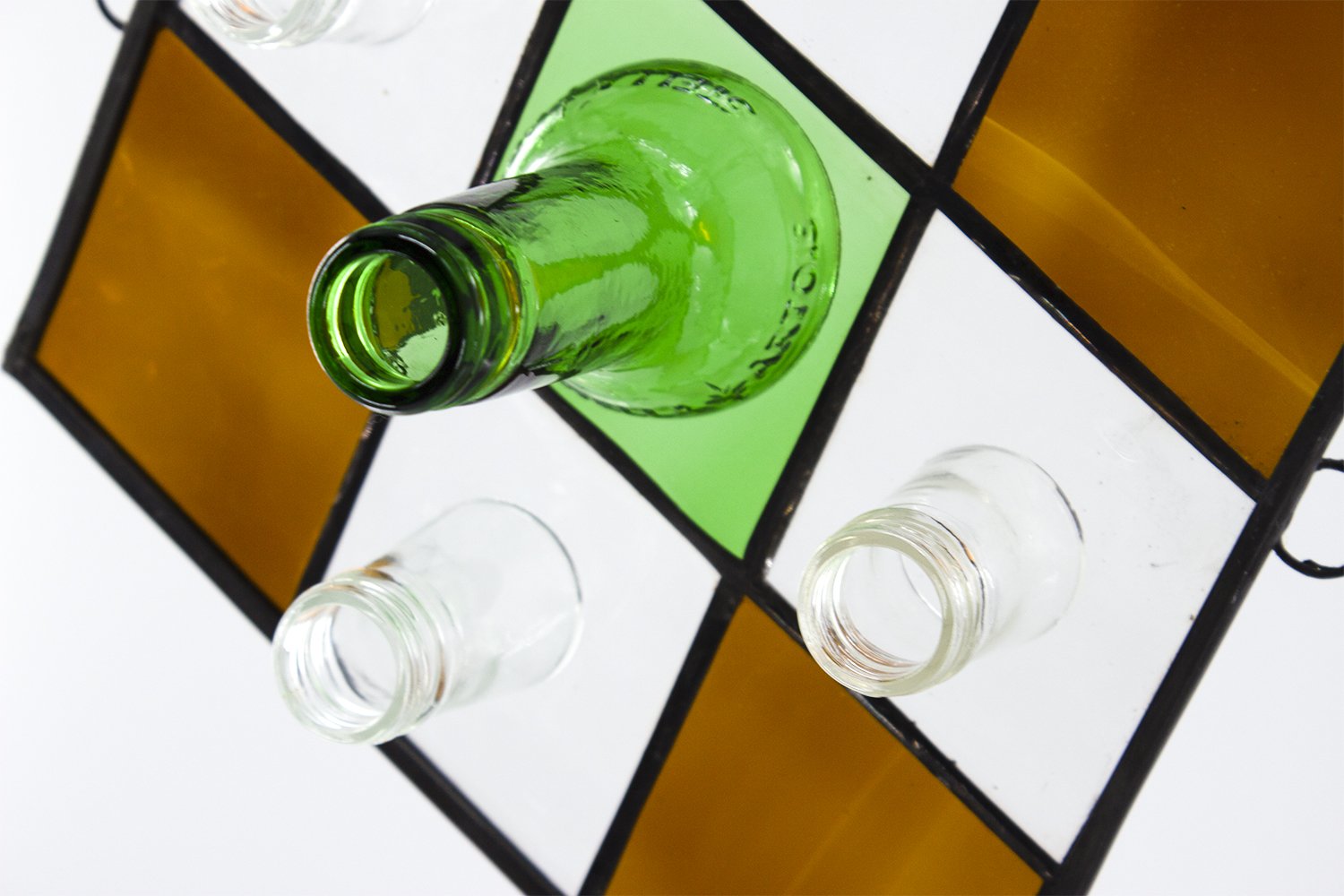
Recycled Glass for Art and Design
A research project by Elena Esposito and Anna Johnson
www.espositoglass.com | www.annalinneaglass.com
Introduction
Glass production has a disastrous effect on the environment, from certain colors of glass adding harsh chemicals to the atmosphere, to the amount of natural gas required to melt the material, glass production is ultimately harmful. Recycled glass is an untapped resource that is “100% recyclable” with, “no loss in quality”, according to Robert Lietz, the executive director of the Glass Manufacturing Industry Council. This study is an exploration of combining glass casting, fusing, and mosaic techniques with bottle glass and trash glass to create technical objects and a reliable process for working with recycled glass.
This group of work is a study and exploration of combining glass casting, fusing, and mosaic techniques with bottle glass and trash glass to create technical objects and a reliable process for working with recycled glass. For this research project we explored different kiln schedules, processing treatments to achieve different particle sizes and types, applying these ideas to fusing and casting. Working in these different sizes and types of particles resulted in different challenges. In the following figures, we worked to explore and work around these challenges, changing types of glass, thicknesses of the end product, particle size, and layers.
Material Studies
For this research project we explored different kiln schedules, processing treatments to achieve different particle sizes and types, applying these ideas to fusing and casting. Working in these different sizes and types of particles resulted in different challenges. In the figures below, we worked to explore and work around these challenges, changing types of glass, thicknesses of the end product, particle size, and layers.
Color and Density Studies
Pyramid Form Studies
Particle Size Studies
Fused and Slumped Studies
Miscellaneous Studies
Conclusion
Experimenting with these different techniques, different processes were found to work with the material. Recycled glass proved to be more nuanced, different types of bottles working differently in the casting and fusing processes. While mixing trash glass into the processes resulted in vastly different results than expected, working well in the casting process but not when engaging the material with fusing or slumping techniques. This type of research is vital due to the future of glass as a production and artistic material. Knowing how to reuse and repurpose glass and even other materials that already exist will be vitally important.













